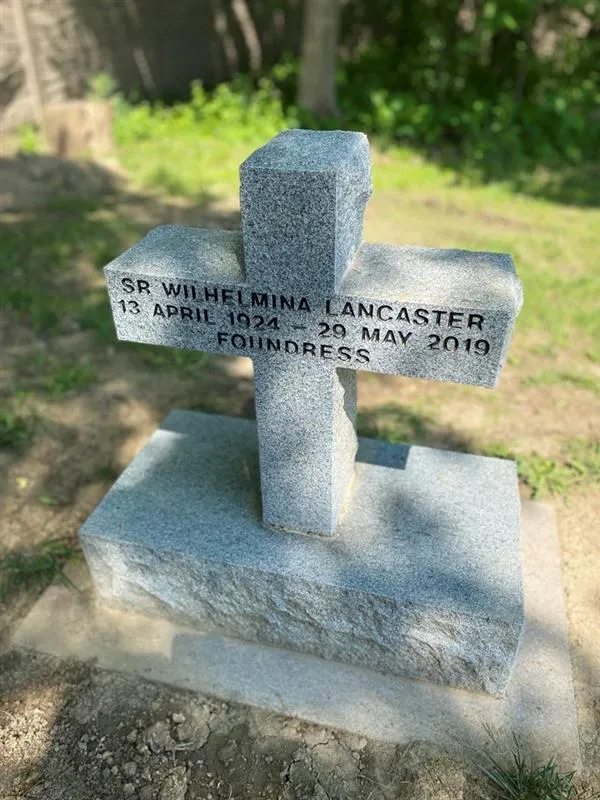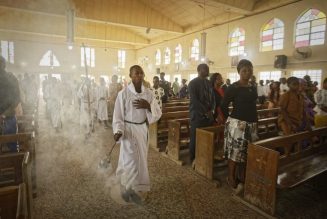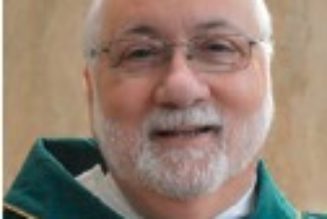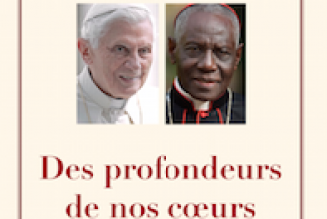 Catholic circles have been abuzz with the exciting news of a possible case of saintly incorruption in the state of Missouri. According to Catholic News Agency:
Catholic circles have been abuzz with the exciting news of a possible case of saintly incorruption in the state of Missouri. According to Catholic News Agency:
Hundreds of pilgrims have descended on a Benedictine monastery for religious sisters in rural Missouri in recent days after news began to spread on social media last week that the recently exhumed remains of the contemplative order’s African American foundress appear to be incorrupt, four years after her death and burial in a simple wooden coffin.
The foundress—Sister Wilhelmina Lancaster, OSB—passed on at the age of 95 in 2019. She was not embalmed.
Recently, it was decided to move her remains into the monastery’s chapel, and it was discovered that the coffin had cracked, allowing moisture and dirt into it.
Despite this, when the coffin was opened, the sisters did not discover the skeleton they expected. Instead, it was discovered that Sr. Wilhelmina’s body was remarkably well preserved, prompting word to spread of her as a possible case of incorruptibility.
Although a cause for the canonization of Sr. Wilhelmina has not (yet) been opened, and there has been no official Church judgment on the preservation of her body, incorruptibility has often been regarded as a miraculous sign of sainthood, prompting pilgrims to come to the monastery.
What are we to make of cases like this? It’s remarkable when a human body seems to have been immune from the natural processes of decay that underlie the truth, “Dust thou art, and unto dust shalt thou return” (Gen. 3:19). And it can be a sign that something supernatural—the hand of God—may be at work in the case.
At the same time, there is reason for caution. First, the immunity from decay often is not total. In most cases of incorruptibility, it is not the case that there has been no change in the body since death. It is simply that there has been less of a change than one would expect given the circumstances and length of time.
Second, there are purely natural things that can arrest the rate of decay. The most common is embalming. This kills the microorganisms that cause decay, so people who have been embalmed are not considered incorruptibles. (Sr. Wilhemina was not embalmed).
Being sealed in an air-tight metal coffin also arrests decay. (Sr. Wilhelmina was buried in a wood coffin that cracked.)
Being buried in a dry, arid climate can cause natural mummification. In fact, the ancient Egyptians may have gotten the idea of making mummies after finding bodies in the desert sands. (Missouri is not Egypt.)
Being buried in an airless bog can similarly arrest decay, resulting in what are known as bog bodies. (Sr. Wilhelmina was not buried in a bog.)
And there are other ways bodies can be preserved from ordinary decay.
However, in many cases the incorruptible bodies of saints are sometimes said to display other unusual properties, such as being associated with a pleasant (rather than unpleasant) smell called the “odor of sanctity.” (The press accounts I’ve seen regarding Sr. Wilhelmina don’t mention this in her case.)
How much evidential value does incorruptibility have regarding whether a person is a saint?
Thought on this has changed over time. Such cases were once commonly cited in canonization causes as miracles attesting to sainthood. Of 1409 cases between the 16th and 20th centuries studied by physician Jacalyn Duffin, 28 were miracles involving the saint’s body (either incorruptibility, odor of sanctity, or something else).
Early 20th century scholar and parapsychologist Fr. Herbert Thurston, S.J., offered an extensive discussion of the subject in his book The Physical Phenomena of Mysticism.
However, because of the growing awareness of natural ways that decay can be limited, thought on the subject has shifted. Duffin writes:
So frequent an occurrence was the finding of incorruptibility that exhumation of the body of the would-be saint was part of the canonization process. . . . But these cadaveric miracles, frequent though they were, seem to have provided only weak evidence for sanctity in modern times. In almost every cause that included a miracle pertaining to the saint’s corpse, other miracles of healing were also included. Eventually, the finding of miraculous preservation was deemed to be indistinguishable from mummification induced by environmental circumstances of humidity and temperature. Because the finding could apply to the remains of people who had not lived exemplary lives, it constituted insufficient evidence for saintliness (Medical Miracles, 102).
Thus, today, the Dicastery for the Causes of Saints does not treat incorruption as a guaranteed sign of sainthood but looks for additional evidence.
Still, it is significant when a body is preserved from normal deterioration, especially when exposed to water and dirt the way Sr. Wilhelmina’s was, and it may be a sign of God’s hand in the case.







